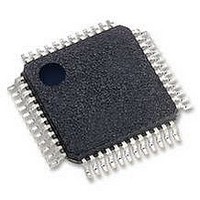OX16C950-TQBG OXFORD SEMICONDUCTOR, OX16C950-TQBG Datasheet - Page 11

OX16C950-TQBG
Manufacturer Part Number
OX16C950-TQBG
Description
IC, UART, 1CH, SMD, TQFP48, 950
Manufacturer
OXFORD SEMICONDUCTOR
Datasheet
1.OX16C950-TQBG.pdf
(50 pages)
Specifications of OX16C950-TQBG
No. Of Channels
1
Data Rate
15Mbps
Uart Features
Tx/Rx FIFO INT TRIG
Supply Voltage Range
3V To 5.25V
Operating Temperature Range
0°C To +70°C
Digital Ic Case Style
TQFP
No. Of Pins
48
Lead Free Status / RoHS Status
Lead free / RoHS Compliant
Available stocks
Company
Part Number
Manufacturer
Quantity
Price
Company:
Part Number:
OX16C950-TQBG
Manufacturer:
SAMSUNG
Quantity:
450
Note 1: Direction key:
I
IU
ID
O
I/O
Note: Attention should be given to high frequency decoupling of power and ground pins due to the high frequency internal switching that occurs
DS-0031 Sep 05
OXFORD SEMICONDUCTOR LTD.
under normal operation
PLCC
Interrupt & DMA Pins
33
27
32
34
Miscellaneous Pins
38
35
1
-
12
Power and Ground
22
44
Input
Input with pull-up
Input with pull-down
Output
Bi-directional
TQFP
30
23
29
36
34
31
37
48
1, 13,
25, 6
18
42
Dir
O
O
O
IU
O
O
ID
ID
1
Name
INT
TXRDY#
RXRDY#
INTSEL#
OUT1#
OUT2#
FIFOSEL
VSEL
NC
GND
VDD
Description
The serial channel has a three-state interrupt output. This signal goes active
(high) when an interrupt condition occurs. The three-state logic is controlled
by INTSEL# and MCR[3] as described below.
Signal for DMA transfer of transmitter data. There are two modes of DMA
signalling described in section 8.1.
Signal for DMA transfer of received data. There are two modes of DMA
signalling described in section 8.1.
Active-low interrupt select. This pin has an internal pull-up resistor. When
INTSEL# is high or unconnected, the INT pin is enabled and MCR[3] is
ignored. When INTSEL# is low, the tri-state control of INT is controlled by
MCR[3]. In this case INT is enabled when MCR[3] is set and is high-
impedance when MCR[3] is low.
This pin is used to save the external three-state buffer for the interrupt pin.
When using this facility, the INT output should be pulled down to GND using
a 1KΩ resistor.
This user defined output pin reflects the complement of MCR[2]. It is inactive
(high) after a hardware reset or during loopback mode.
This user defined output pin reflects the complement of MCR[3]. It is inactive
(high) after a hardware reset or during loopback mode
FIFO select. This pin has an internal pull-down. For backward compatibility
with 16C550, 16C650 and 16C750 devices the FIFO depth is 16 when
FIFOSEL is low or left open. The FIFO size is 128 when FIFOSEL is high.
The unlatched state of this pin is readable by software. The FIFO size may
be set to 128 by writing a 1 in FCR[5] when LCR[7] is set or by putting the
device into Enhanced mode, thus overriding the state of the FIFOSEL pin.
This pin is unconnected in 16C550 and 16C750 devices.
Voltage selector. This pin is used to control the voltage thresholds on all
input pins. When low (or unconnected), 5V biased TTL thresholds are used.
When high, 3V biased TTL thresholds are used. Generally should be tied
high when the OX16C950 is being powered off 3 Volts, and low (or
unconnected) when powered off 5 Volts. If tied high under 5V operation,
CMOS compatible input thresholds are obtained.
As this pin is not accessible in the PLCC, the PLCC is unsuitable for 3V
applications.
These pins are not connected.
Ground (0 Volts). The GND pin should be tied to ground.
Power supply. The VDD pin should be tied to 5 Volts or 3.3 Volts
Table 2: Pin Descriptions
External—Free Release
OX16C950 rev B
Page 11












